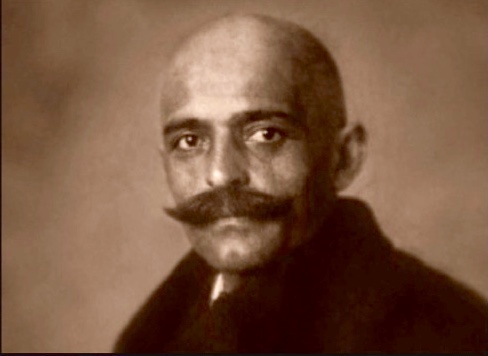
Of all the great men that Thomas de Hartmann came across during his eventful life, Gurdjieff surely had the strongest influence. For 12 years they were in a student-teacher relationship — from 1916 when they met in St. Petersburg until 1929 when they separated in Fontainebleau, France, never to see each other again. Afterwards, though they were not in contact, de Hartmann always considered Gurdjieff to be his teacher, and spoke about him only with the greatest respect.
Because of this, anyone who delves into de Hartmann’s life and music will eventually come across Gurdjieff’s name. But who was this man? In many ways he was an enigma, a person who presented himself to others in widely differing manners, depending upon the circumstance. A casual search on the internet will reveal differing and sometimes misleading descriptions.
Perhaps it is best to look at his life story, found in his book Meetings With Remarkable Men. In it he describes a number of unusual experiences he had as a child growing up in Kars, in Eastern Turkey on the border of Russia in the 1870s. These could not be explained by the local intelligentsia or in books, and he became convinced that the answers he wanted would only be found in ancient sources of knowledge. At the age of 11 he began traveling, and spent many years searching for answers throughout Asia, the Middle East and North Africa. Gradually his question became “What is the purpose of life on the Earth, and in particular human life?”
In 1913 he appeared in Moscow with a teaching concerned with man’s inner transformation. It contained a psychology and cosmology, as well as original ideas about history and the arts. He also used practical methods for self-study and group work.
———————————————————————————–
When he met Kandinsky in 1908 in Munich, de Hartmann found a lifelong friend. 18 years older than de Hartmann, Kandinsky exposed him to Eastern religions and theosophy. De Hartmann became convinced that his composing would deepen if he could find a way to develop his inner life. At the outset of World War 1, he returned to Russia and began actively looking for a teacher. In December 1916 he met Gurdjieff in St. Petersburg. It was a pivotal moment in his life.
It is not necessary for music lovers to know the details of de Hartmann’s spiritual path – any more than one needs to understand Lutheran Christianity to understand Bach. However, for the reader would like to find out more, I would recommend the following sources. The first is de Hartmann’s own book, Our Life With Mr. Gurdjieff, engagingly written as a story chronicling the years they spent together, from 1916 to 1929. Secondly, Gurdjieff: Making a New World, by J. G. Bennett provides a comprehensive account of Gurdjieff’s life and teaching written by one his pre-eminent pupils. A third source of value is Roger Lipsey’s book, Gurdjieff Reconsidered: the Life, the Teachings, the Legacy.
